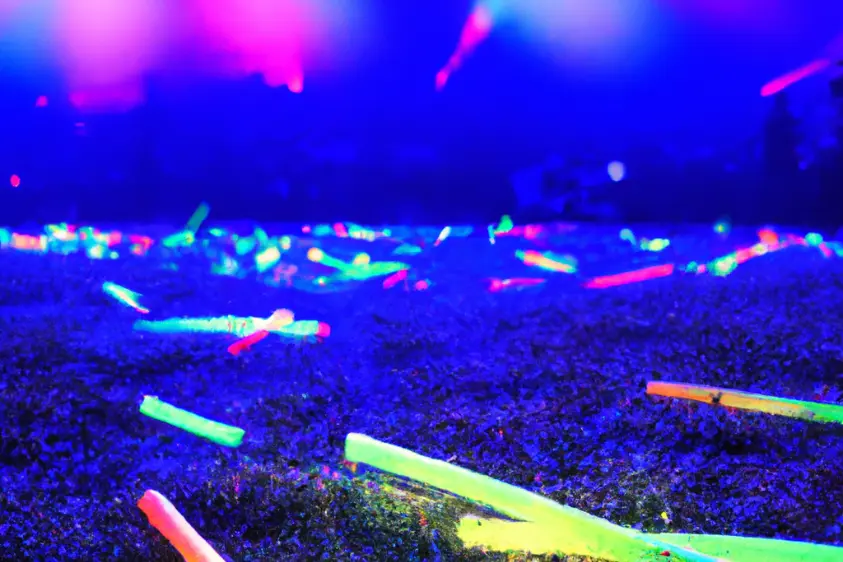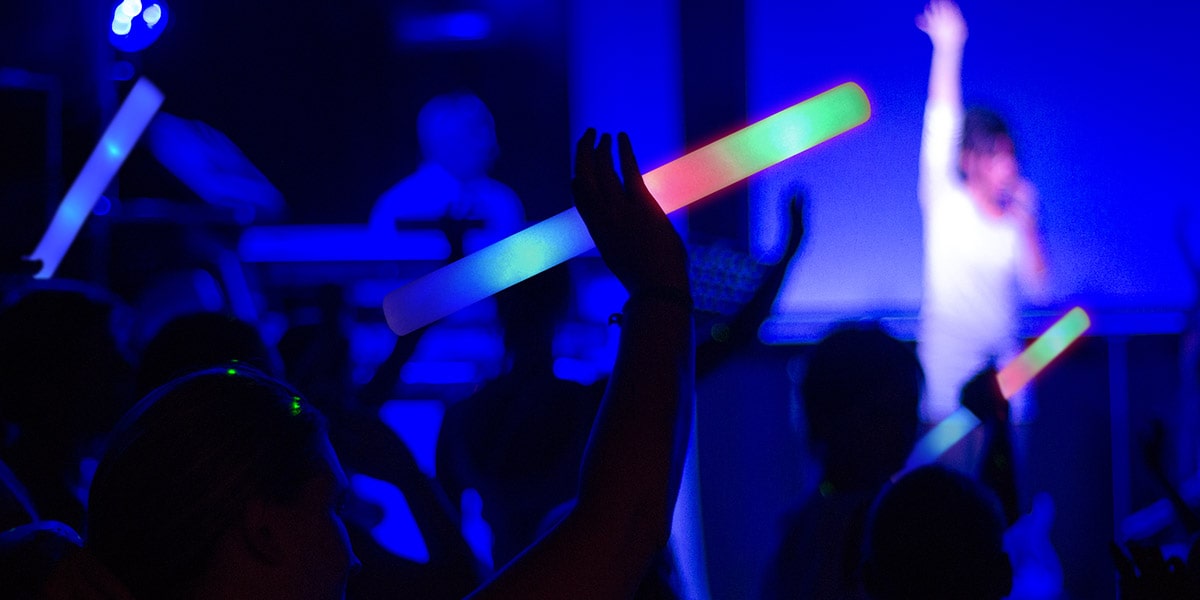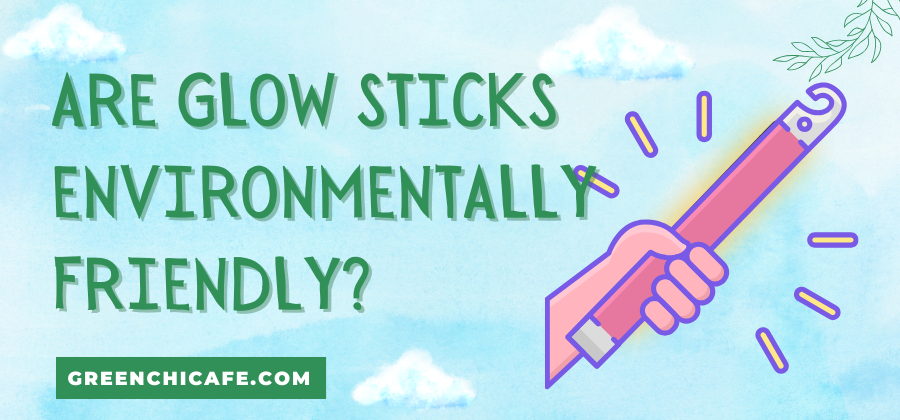Last Updated on June 3, 2024 by Annie Baldwin
Glow sticks have become a popular party item.
Their bright glow makes them fun and exciting but what’s actually inside these plastic tubes, and what happens when you’re done using them?
Let’s break down the facts on whether glow sticks are environmentally friendly.
Are Glow Sticks Environmentally Friendly?

No, glow sticks are not environmentally friendly.
They are made of non-biodegradable plastics and contain chemicals that can harm the environment if leaked or disposed of improperly.
Safer, eco-friendly alternatives are available.
Key Points
- Glow sticks contain non-biodegradable plastics and chemicals.
- The chemicals inside can be toxic if leaked into the environment.
- Proper hazardous waste disposal is required for used glow sticks.
Our Opinion
Based on the information in this article, we do not recommend glow sticks as an eco-friendly product.
The plastics and chemicals make them problematic from an environmental standpoint.
We suggest choosing reusable, biodegradable options whenever possible.
Are Glow Sticks Biodegradable?

Unfortunately, glow sticks are not biodegradable. They are made of non-biodegradable plastic and contain chemicals that allow them to glow. When you’re done using a glow stick, you can’t simply throw it away and expect it to break down. The plastic casing and chemical mixture inside will persist in landfills.
Glow sticks also cannot be recycled. Most recycling centers do not accept them because of the chemical mixture inside. So used glow sticks will end up in a landfill where they can leak chemicals into the environment.
While glow stick liquid is labeled “nontoxic”, this term has no formal definition or regulation. Exposure to the chemicals could be harmful, especially for younger kids. The plastic casings also pose a choking hazard if broken.
What Materials Are Used in Glow Sticks?
Glow sticks are made up of a few key components that allow them to glow:
- Plastic tubing – The outer casing is made of a brittle plastic that easily cracks when bent.
- Glass vial – Inside is a thin glass tube containing the chemical mixture.
- Hydrogen peroxide – This reacts with the dye to produce light.
- Phenyl oxalate ester – The dye that provides the color and light.
- Fluorophore – An organic compound that fluoresces.
When the plastic tube is bent, the inner glass vial breaks, allowing the hydrogen peroxide and dye to mix and react. This produces an exothermic chemical reaction that excites the fluorophore molecules and makes them emit light. The color depends on the specific dye molecules used.
While these materials together produce an exciting glow, they also make glow sticks difficult to dispose of responsibly. The plastic and glass don’t biodegrade or decompose. The chemical mixture can be hazardous in large quantities. This combination of materials is what classifies glow sticks as environmentally unfriendly.
If you’re looking for a reusable glow product, LED-based glow sticks are a better option. The plastic contains a replaceable LED bulb rather than a chemical mixture. Once the batteries run out, simply replace them and the stick is good to go again! LED glow sticks avoid those single-use plastics and chemicals.
Do Glow Sticks Harm the Environment?
While glow sticks themselves are not toxic, the way they are made and disposed of can negatively impact the environment.
One of the biggest concerns is the plastic casing, which does not biodegrade. Millions of glow sticks are sold each year for concerts, parties, and Halloween. All that plastic ends up in landfills or as litter.
The glass vials inside glow sticks also do not decompose. When glow sticks break, the glass shards remain in the environment forever. This can be dangerous for wildlife if animals ingest broken glow stick parts.
The liquid chemical mixture inside glow sticks, though not highly toxic, can contaminate soil and water supplies if large quantities are released. Some of the compounds like dibutyl phthalate are considered hazardous waste.
Proper disposal of used glow sticks is important to limit environmental harm. Putting them in the regular trash means the plastics and glass end up in landfills. The best way to dispose of glow sticks is through special hazardous waste collection programs. Or reuse and recycle them if possible.
Consider eco-friendly alternatives like reusable LED glow sticks for your lighting needs. They avoid disposable batteries and plastics while providing a safer product for people and the planet.
Environmentally Friendly Alternatives to Glow Sticks

There are a few safer, more sustainable options to consider instead of single-use glow sticks.
Reusable LED glow sticks are a great option. They provide bright, long-lasting light without batteries or chemicals. Look for durable, waterproof models designed to last for years.
For a zero-waste choice, try reusable silicone LED bracelets. These strap onto your wrist and provide a soft glow. They’re powered by tiny solar panels so no charging is needed.
Natural bioluminescence is another amazing alternative. Some companies offer reusable vials containing bioluminescent plankton that light up when shaken. The plankton are sustainably harvested and released back into the ocean after.
For DIY fun, create your own glow sticks using non-toxic fluorescent paints. Just coat the inside of mason jars or recycled bottles and make magical glowing lanterns. Add glitter or flowers for decoration.
Tap into your creativity and choose reusable, non-toxic options for lighting up your next event or party. With so many innovative products available today, glow sticks don’t need to harm the environment.
Making Glow Sticks More Eco-Friendly
While some choose to avoid glow sticks altogether, manufacturers are taking steps to improve their environmental footprint.
Some companies now use non-toxic, plant-based dye inside their glow sticks instead of harsh chemicals. This makes disposal safer, though they still contain plastic.
Recyclable plastic glow stick casings are also becoming more common. However, few facilities actually recycle them at this time. More progress is needed.
An exciting innovation is edible glow sticks made from non-toxic ingredients. They provide a fun glow and can be eaten when the light fades, eliminating waste.
Using glow sticks responsibly can help too. Avoid single-use sticks, reuse those you have, and keep them out of waterways. Proper disposal is critical.
While not perfect, these advances show promise for reducing the environmental impact of glow products. With consumer demand and innovation, more sustainable options could light the way.
FAQ
What Is the Eco-Friendly Alternative to Glowsticks?
Some eco-friendly alternatives to glowsticks include reusable LED lights, bioluminescent sticks made from natural materials, and glow-in-the-dark paints.
How Do I Dispose of Glow Sticks?
Used glow sticks should be disposed of properly as hazardous waste due to the chemicals inside. Contact your local waste management authority for safe disposal instructions.
Is Glow Stick Juice Bad for the Environment?
Yes, the liquid inside glow sticks contains chemicals that can be toxic and harmful to the environment if leaked or disposed of improperly.
Are Glow Sticks Natural or Artificial Light?
Glow sticks produce artificial light through a chemical reaction rather than a natural process, so they are considered an artificial light source.
Conclusion
Glow sticks are not environmentally friendly. They contain non-biodegradable plastics and chemicals that can harm the environment if disposed of improperly. Eco-friendly alternatives like reusable LED lights, bioluminescent sticks, and glow-in-the-dark paints are available. Overall, care should be taken to dispose of used glow sticks properly as hazardous waste.
